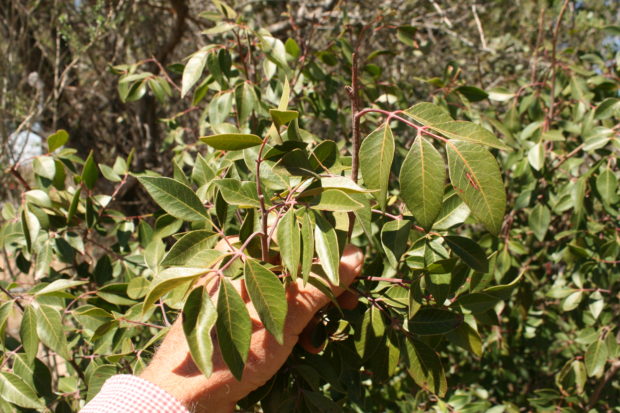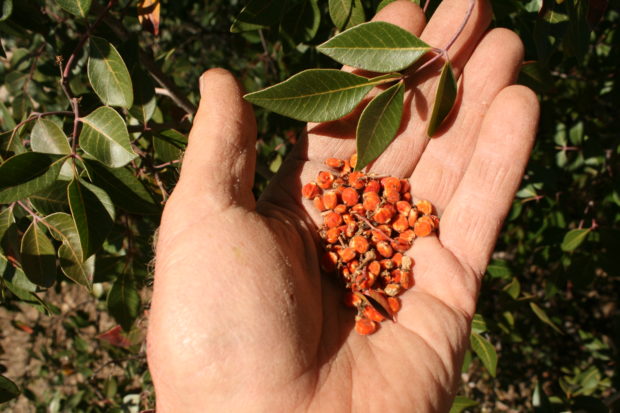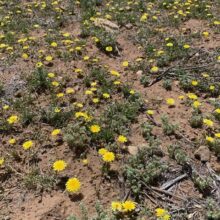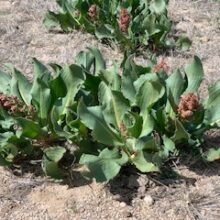
I like the name sumac. I learned it when I was a kid in Kentucky. The most talked about sumac of my youth was poison sumac or poison ivy, but there were other sumacs, like the large Rhus typhina (staghorn sumac) with it’s spectacular panicles of crimson fruit. The name sumac goes way back – I’m talking Assyrian! – and it means red or turning red. It could be referring to a deciduous species that turned red in the fall or maybe, and I like this, the bright red fruit. The bright red berries of many of the species found around the world are edible. I’m always telling folks about how the fruit of our native sumacs can make a delicious tart sun tea, but the fruit can also be ground up to make a tart condiment to sprinkle over food from salads to rice to whatever you think may need a tart pick me up.
There are 8 species of Rhus found in Arizona. Some are deciduous and some like the Mearns sumac are evergreen. Mearns sumac is Rhus virens var. choriophylla in case you want to look it up and it’s in the Cashew family, Anacardiaceae, a name that is a delight to pronounce…all those syllables!

The photos are mine and taken in our driveway where I had planted a few of these evergreen shrubs. I noticed that the stem tips have been munched on by visiting mule deer. The fruit in my hand is going to get cleaned and planted. That’s exciting.






